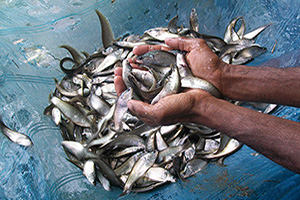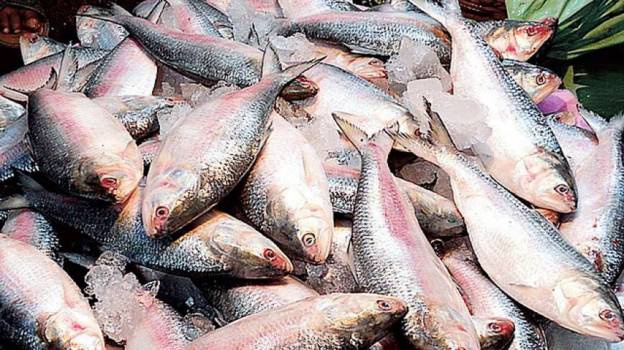The State Fisheries Department has endeavoured to give every manner of infrastructural help to fishermen, including fish research facilities to increase yield and to experiment on newer and more profitable species.
Storage infrastructure: As part of the ‘cold chain scheme’, the department has been sanctioned money for the construction of cold storages and, through the distribution of bicycles with insulated boxes, the development of transit and terminal markets, including retail outlets. Eight cold storages and six ice plants have been constructed.
Khuti societies: The State Government provides financial aid for the development of khuti societies, that is, fish drying centres. A total of 53 khuti societies in Contai and Diamond Harbour benefit from this aid. Considering essential aspects, the aid includes money for the operation and maintenance of the khutis or fish drying centres, including wages for khuti attendants and sweepers, development of khuti infrastructure like link roads, submersible pumps, solar lights, fish-drying platforms and bamboo structures, supply of hygienic materials and small equipments, and the repair of tube-wells.
Fishing harbours and fish landing centres: Under the department, there are seven minor fishing harbours and 13 fish landing centres. The entry channel at Kakdwip Harbour has been completed. Benfish has constructed modernised fish markets in Kalyani (Nadia district), Bolpur (Birbhum district), Uluberia (Howrah district) and Gangarampur (Dakshin Dinajpur district). Five fish landing centres have been recently constructed benefiting 8,700 fishermen in Indrapur, Satyadaspur, Kantamari, Raidighi/Domkal, Kheyaghat and Namkhana in South 24 Parganas.
Hatchery accreditation: Nineteen hatcheries have been constructed to ensure production of quality fish seed, and 231 hatcheries have been accredited.
Fish markets: Ten fish markets have been constructed – fish seed markets in Sinhati (Bankura district) and Rajendrapur (North 24 Parganas), wholesale and retail fish markets in Haldibari (Cooch Behar), Bolpur (Birbhum), Kalyani (Nadia), Fuleshwar (Howrah) and Udayrampur (South 24 Parganas), Nalban International Ornamental Fish Market, Kantamari (South 24 Parganas) and Jharkhali (South 24 Parganas) markets. Besides these, the upgrading of the wholesale fish market in Howrah is in progress.
Fish research centres: The department is setting up block-level laboratory-cum-training centres for testing water and soil of water bodies to determine suitability for pisciculture. So far 308 have been built; another 25 have been sanctioned. Research on fish and fisheries is being conducted at Pailan Research Centre in South 24 Parganas. At the Fresh Water Research Centre in Kulia near Kalyani in Nadia district, research is being carried out on production of seeds of freshwater fish, including endangered species, ornamental or aquarium fish, etc. The latter has a high export value. Rural women are being trained on ornamental fishery.
Hilsa production & research: To combat the issue of the decline in the catch of hilsa over the past decade, a dedicated Hilsa Conservation and Research Centre (HCRC) has been established at Sultanpur, Diamond Harbour, in collaboration with the Norwegian research institute, Norwegian Institute of Food Fisheries and Aquaculture Research (NOFIMA).
Brackish water fishery: The Government provides substantial aid for increasing the production of fish in regions of brackish water, mainly found in the Sundarbans delta.
The above facts prove that the Trinamool Congress Government is committed to the all-round development of the fisheries sector.






